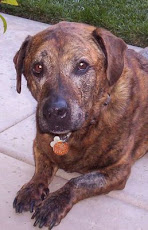It is Friday, July, 11, and I've been home for nine hours. I feel fantastic. I wanted to get down a few thoughts about the surgery before I forget, so here goes.
I arrived Wednesday morning at Scripps Green at 8am, check in time for 10am surgery. Ron dropped me off, then went to breakfast with a friend, and waited for the call from the doctor saying I was in recovery. Dr. Bugbee called Ron around 1pm telling him that all went well, and to come over to the hospital. From 9:30am-12:45 I remember nothing. The staff at Scripps Green were WONDERFUL. I met the anthestheisiologst at 9:45 and he told me about the nerve block he was getting ready to administer. I was a little worried about that shot in the groin, but he assured me I would be in la la land and feel nothing. He was right. I was gone in an instant, and don't remember anything until recovery and trying to read the clock.
I arrived in my room, 414B, at 1pm. I had the most beautiful view you could imagine. I looked out on Torrey Pines Golf Course, Pacific Ocean in the background and hang gliders everywhere. If you have to be in a hospital, this is where you want to be. At this point, I was feeling no pain. Ron arrived and visited with me for about 2 hours. I finally kicked him out, telling him I couldn't follow the conversation and just wanted to sleep. He left me alone, to try to get some rest.
It's hard to rest in a hospital. The staff arrives like clockwork every 2-4 hours to check your vitals and see how you're feeling. Just when you doze off, in comes a rattling cart ready to take BP, temperature and straighten out your bed. Don't ever go to the hospital and expect to rest. At about 5pm my roommate arrived. Her husband, mother in law and daughter where there too. They stayed about an hour, and then left, giving us a chance to meet one another and then rest.
My roommate was Kathy. We had actually met about 10 days prior at our surgery education class. A sign in sheet was going around the room, and she noticed that she and I had the same doctor on the same day, so she introduced herself. My surgery was at 10am, hers was at 2pm. We ended up sharing a room, and had two wonderful days getting to know each other and sharing our post op experience together. It turns out we have many friends in common. Such a small world.
Kathy had a full knee replacement, and I had a partial, and there definitely is a difference in recovery. Of course that makes perfect sense. We were both feeling great initially, as the nerve block takes 24-48 hours to wear off. You know the block is gone when you can lift your straight leg off the bed. It took 36 hours for both of our blocks to wear off. I had very little pain at this point, whereas Kathy had more significant pain. I was ready to go home early Friday morning, and Kathy opted for another day.
PT is started on the afternoon of surgery. At first I was simply standing with a brace on my leg (to prevent my rubbery leg from collapsing), taking a few steps, and doing a few simple leg lifts in bed. The real PT started the next day, again consisting of warm up exercises in bed, then a brace on my leg for protection, finally walking down the hall. Once I got going I felt great. By the time I left on Friday morning I was walking without the brace, around the nurses station, and practicing walking up and down steps.
Kathy and I became fast friends. Our husbands enjoyed meeting each other, and we will definitely get together soon to compare notes. We had so many common friendships, and in just 36 hours we knew so much about each other. It made the time go fast. She met my visiting friends, I met hers, and our time together was one big party.
Just two things were not to our liking: anti inflammatory injections that went right into the IV burned like hell. Whoa. I can feel that sting now. Also, we wore little booties that pumped up constantly, to prevent blood clots. Just when you felt yourself dozing off, the bootie would pump up and wake me up. All in all, it was a wonderful hospital experience, not like I was expecting at all. I'm home and on my way to recovery, and I'll write one more surgery blog about what comes next. I can tell that for me, this is going to be a quick recovery. I have to believe that all that exercise at the Y has made my recovery faster. More later.







